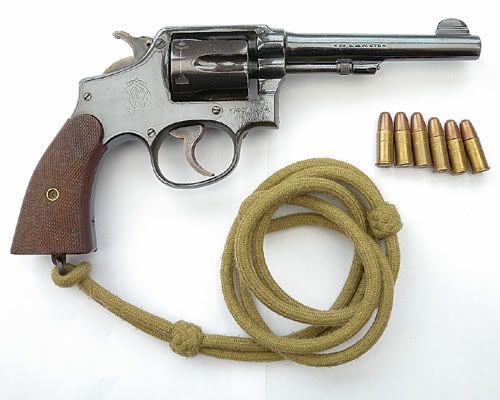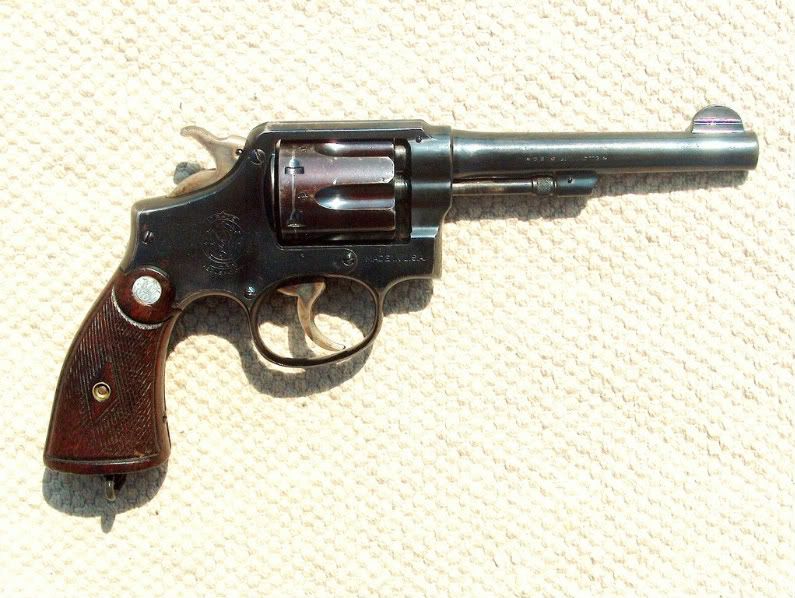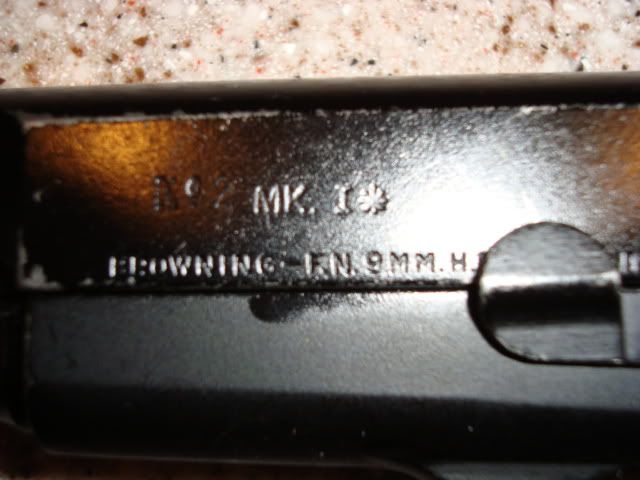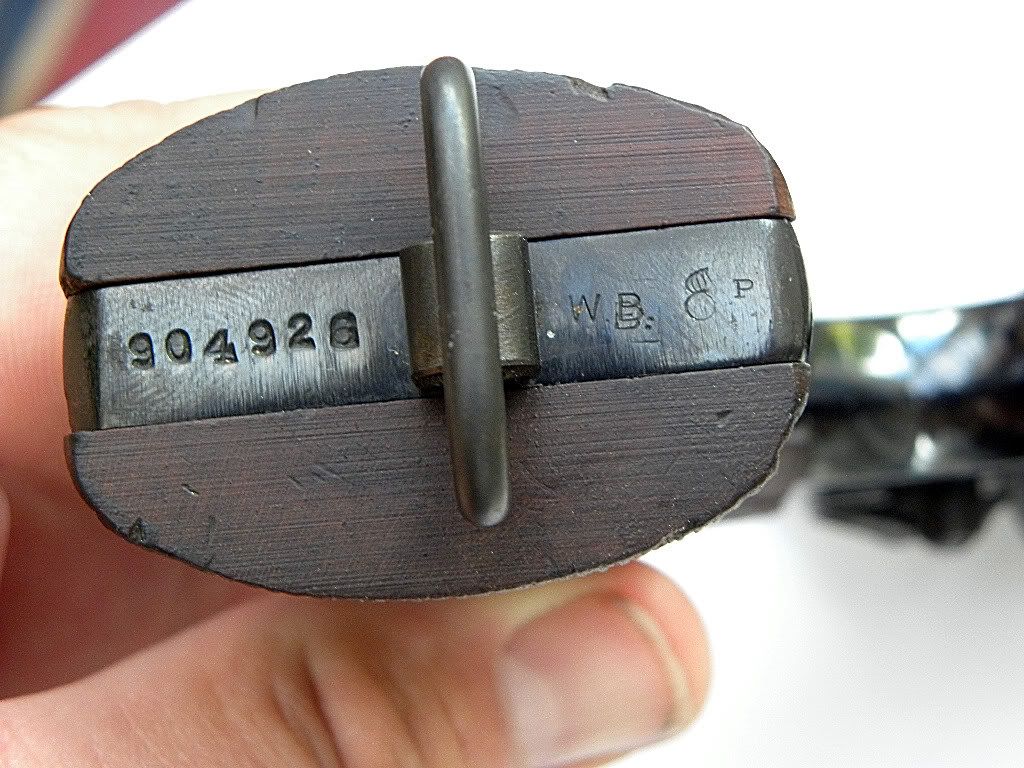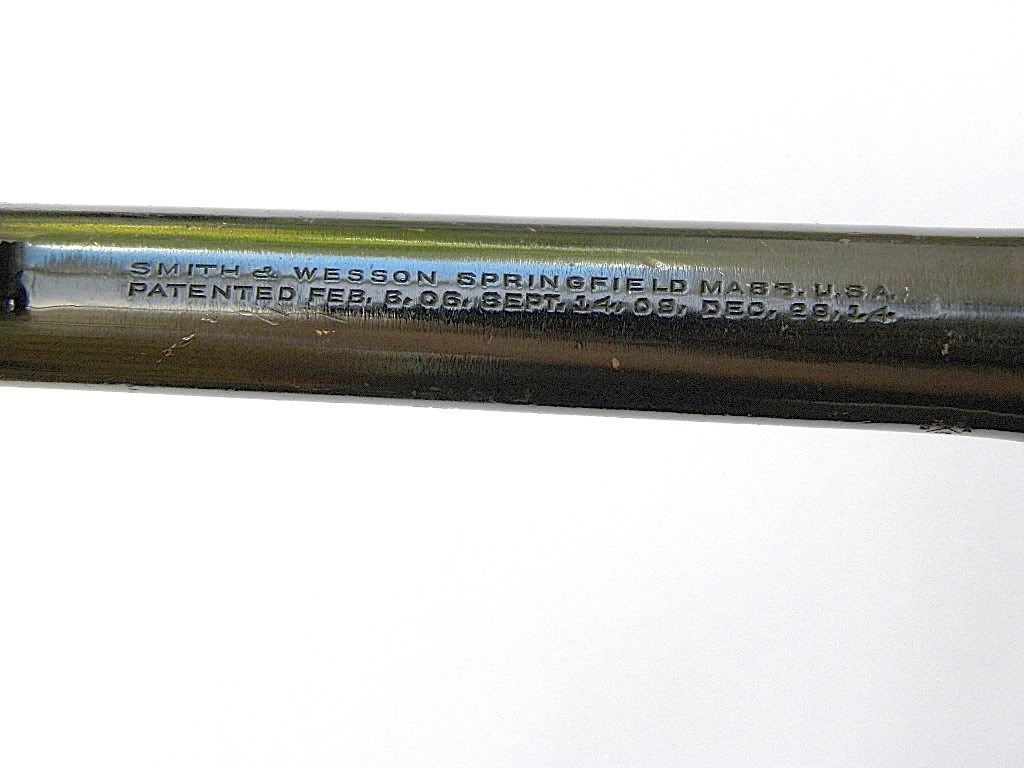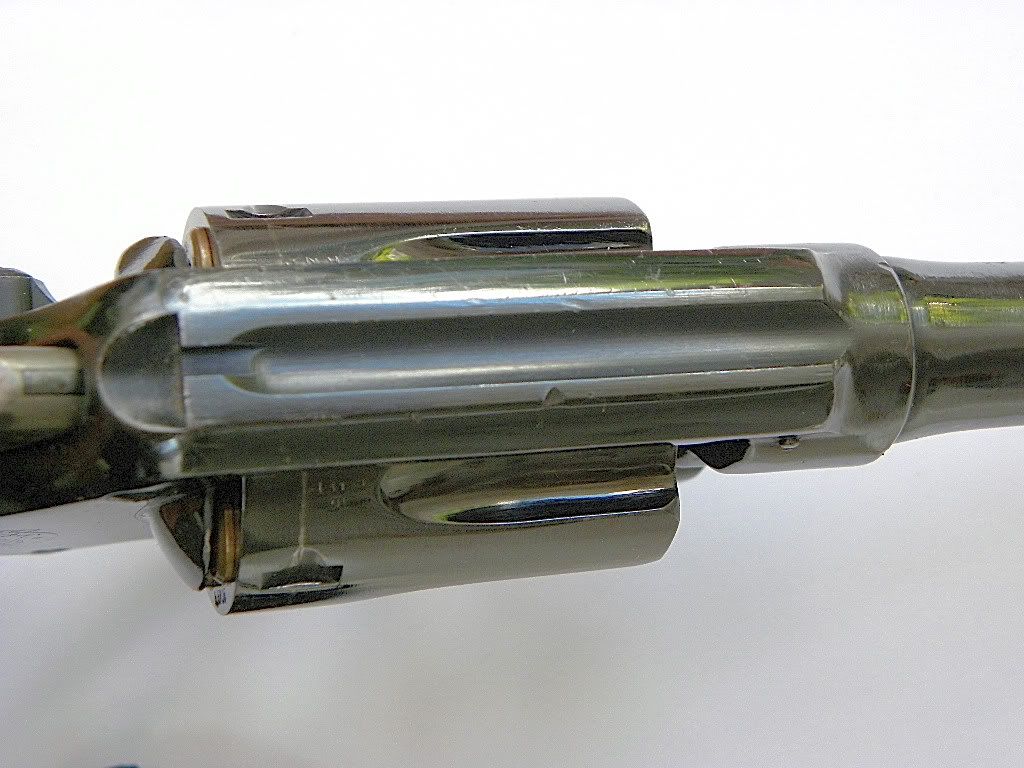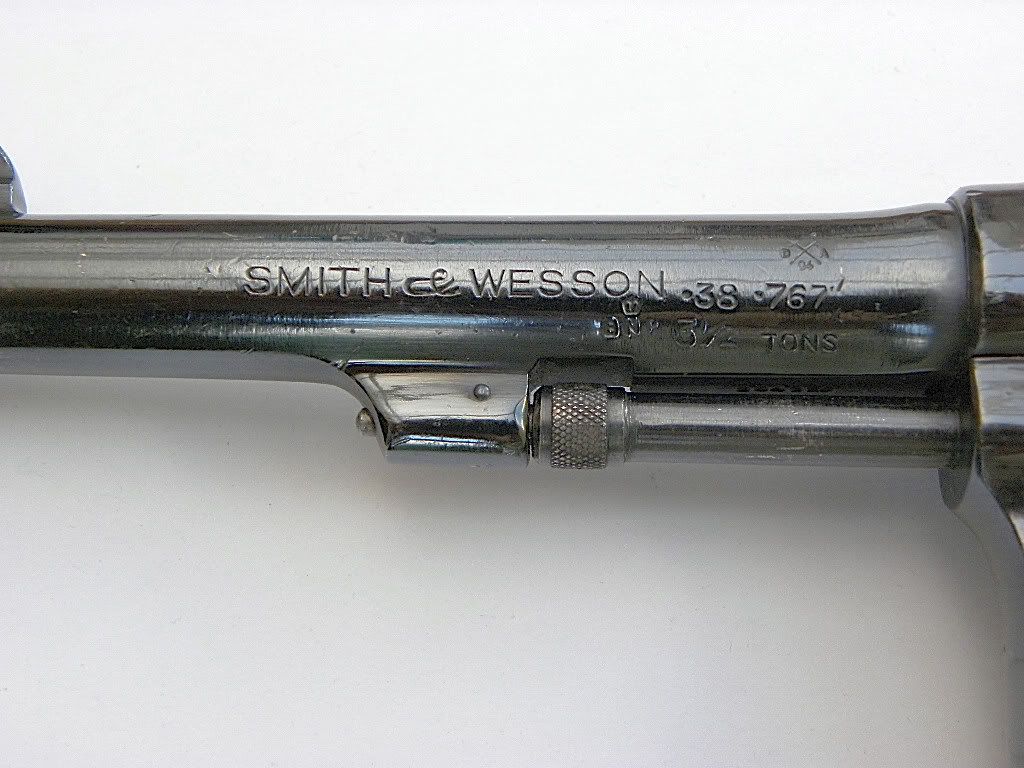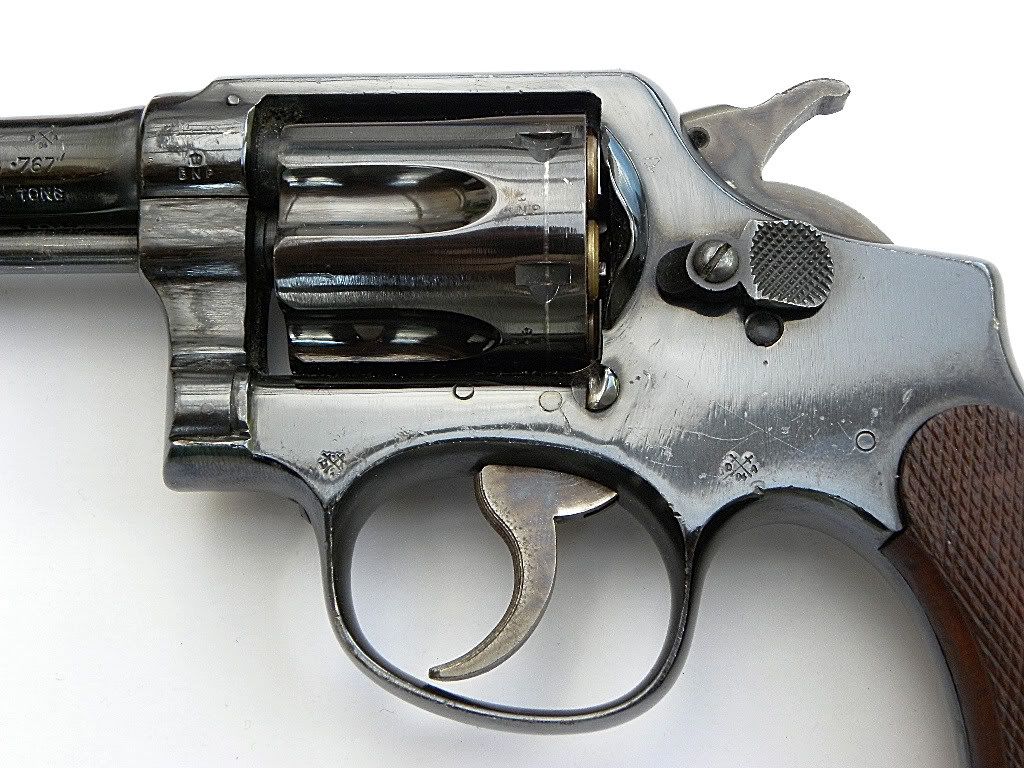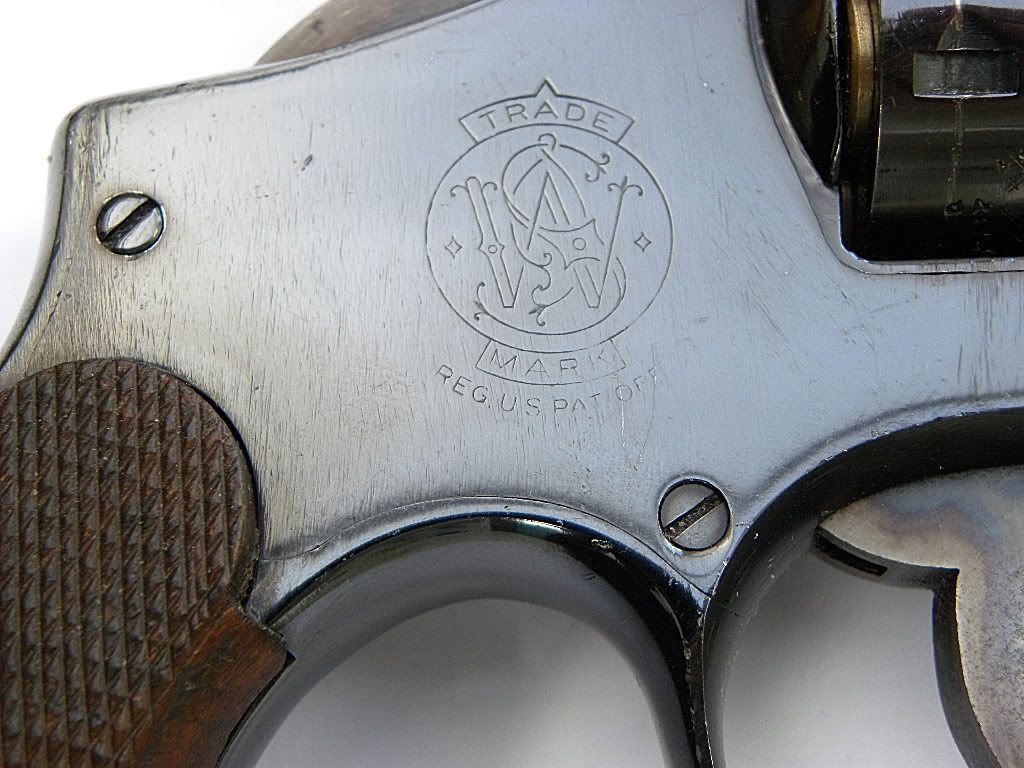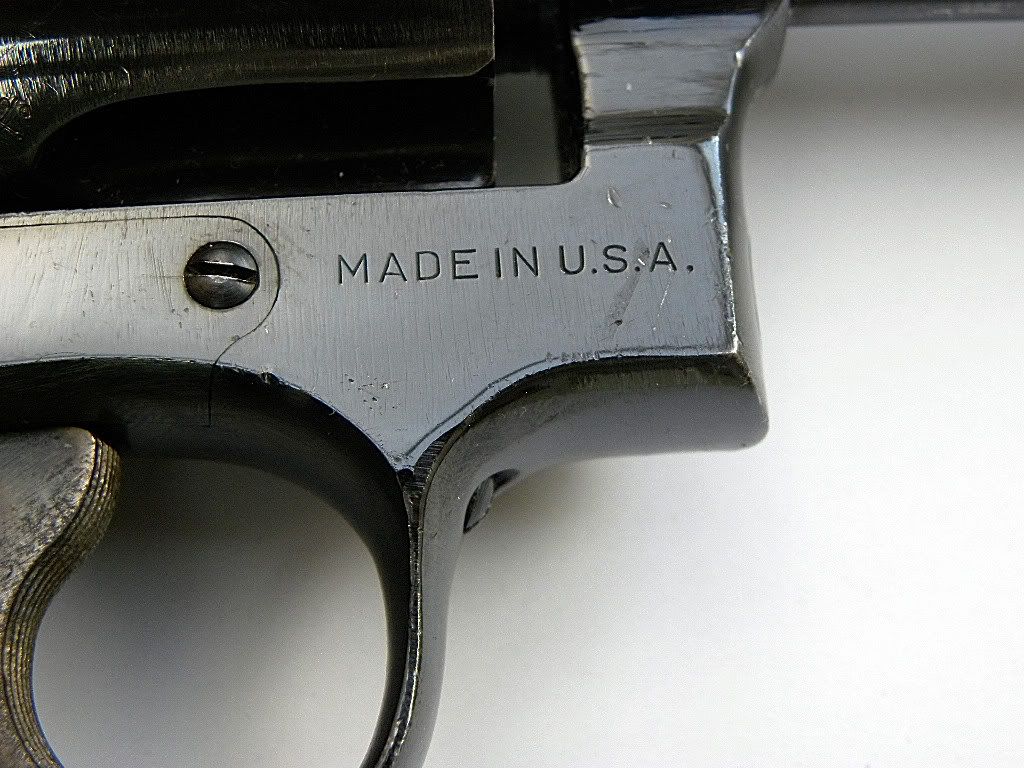BIG DAZ UK
Well-known member
Help  I have been finally researching (what I think) a pre victory 38/200 revolver that I have owned for about 18 years.
I have been finally researching (what I think) a pre victory 38/200 revolver that I have owned for about 18 years.
I have bought the excellent book US pistols of WW2 the secondary models by Charles W Pate and it has just given me more questions and confusion.
When I first bought the gun I thought it was a British issue as it was in the calibre 38/200 (+cylinder rebates) it also had what I now know are post war british birmingham view marks and BNP nitro proof marks from when it was sold on, there is no crows feet british ordnance stamps nor a US property stamp, also the finish looks different to all others I have seen (all over light tooling marks a bit like my mint late war P38 and gloss black finish) as are the grips (checkered but no medallion) but the afforementioned look to be original (no marks/wear to any screw heads inc grips & under the grips looked like they had never been off when I checked.
Under the grips on the left bottom is the letters KO under the right grip at the top is the letter Z at the bottom is the letter L plus some very small hard to see markings.
The serial No is 904926 it was inspected by W.B (Waldemar Broberg).
I have done as much research as I can myself I just want to know who it was issued to (branch not person) when it was made is the strange finish and grips original.
I apologise in advance if I have said something british and hard to understand.
Forgot to say the barrel is 5 inches long & I have a picture if any volunteers want to see/put it on here for me (have not got a clue how to)
I have bought the excellent book US pistols of WW2 the secondary models by Charles W Pate and it has just given me more questions and confusion.
When I first bought the gun I thought it was a British issue as it was in the calibre 38/200 (+cylinder rebates) it also had what I now know are post war british birmingham view marks and BNP nitro proof marks from when it was sold on, there is no crows feet british ordnance stamps nor a US property stamp, also the finish looks different to all others I have seen (all over light tooling marks a bit like my mint late war P38 and gloss black finish) as are the grips (checkered but no medallion) but the afforementioned look to be original (no marks/wear to any screw heads inc grips & under the grips looked like they had never been off when I checked.
Under the grips on the left bottom is the letters KO under the right grip at the top is the letter Z at the bottom is the letter L plus some very small hard to see markings.
The serial No is 904926 it was inspected by W.B (Waldemar Broberg).
I have done as much research as I can myself I just want to know who it was issued to (branch not person) when it was made is the strange finish and grips original.
I apologise in advance if I have said something british and hard to understand.
Forgot to say the barrel is 5 inches long & I have a picture if any volunteers want to see/put it on here for me (have not got a clue how to)
Last edited:

